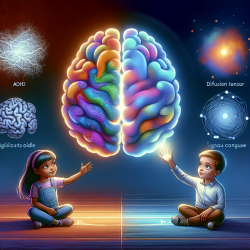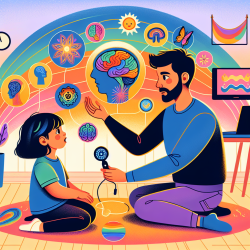Exploring the Impact of Comorbid ODD on ADHD
As practitioners in the field of speech-language pathology, understanding the neurobiological underpinnings of disorders such as Attention-Deficit/Hyperactivity Disorder (ADHD) and Oppositional Defiant Disorder (ODD) is crucial for effective intervention. A recent study published in the European Child & Adolescent Psychiatry journal sheds light on how comorbid ODD influences white matter microstructure in individuals with ADHD, offering insights that can enhance therapeutic strategies.
The Study at a Glance
The study utilized Diffusion Tensor Imaging (DTI) to examine differences in white matter microstructure between ADHD patients with and without comorbid ODD. The research found that individuals with both ADHD and ODD exhibited lower fractional anisotropy (FA) in the left frontotemporal white matter. This alteration was independent of ADHD symptoms and was negatively associated with antisocial behavior in the ADHD + ODD group.
Implications for Practitioners
These findings have significant implications for practitioners working with children diagnosed with ADHD and ODD. Here are some key takeaways:
- Targeted Interventions: Understanding that comorbid ODD can lead to distinct white matter abnormalities suggests the need for tailored interventions that address both ADHD and ODD symptoms.
- Behavioral Assessments: Incorporating assessments for antisocial behavior can help identify children at risk of more severe white matter abnormalities, allowing for early intervention.
- Multidisciplinary Approach: Collaboration with neurologists and psychologists can provide a comprehensive treatment plan that addresses the neurobiological aspects of these disorders.
Encouraging Further Research
While this study provides valuable insights, it also highlights the need for further research to fully understand the complexities of ADHD and ODD comorbidity. Practitioners are encouraged to stay informed about ongoing research and consider participating in studies that explore these neurodevelopmental disorders.
For those interested in delving deeper into the research, the original paper can be accessed here: The influence of comorbid oppositional defiant disorder on white matter microstructure in attention-deficit/hyperactivity disorder.
Conclusion
Understanding the influence of comorbid ODD on white matter microstructure in ADHD is essential for developing effective interventions. By integrating these research findings into practice, speech-language pathologists can contribute to better outcomes for children facing these challenges.










